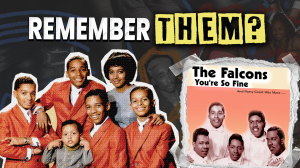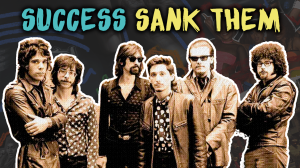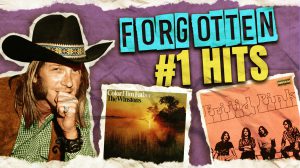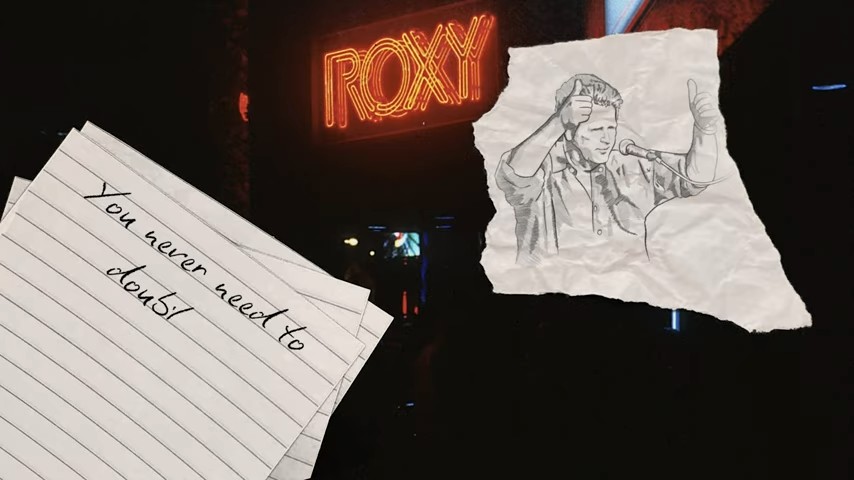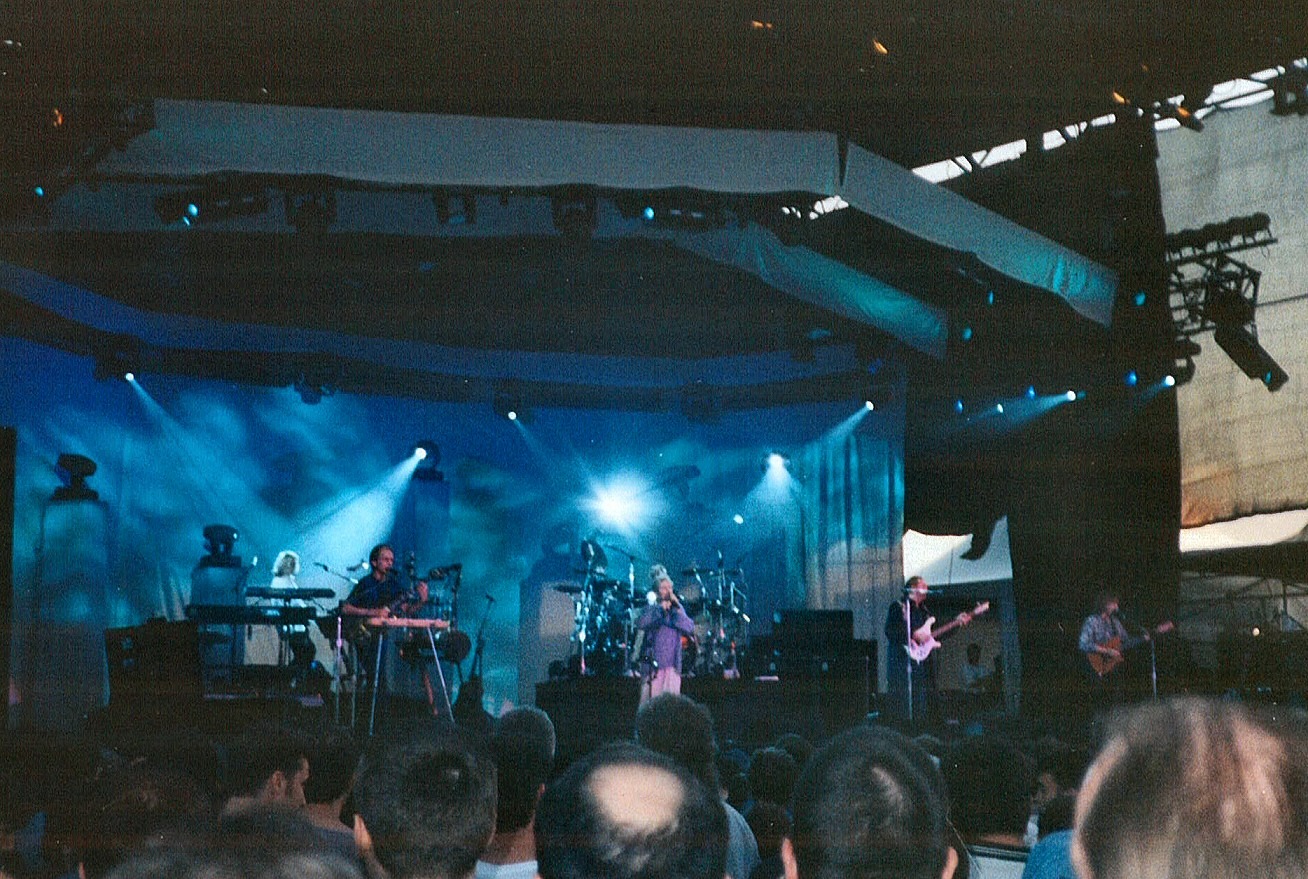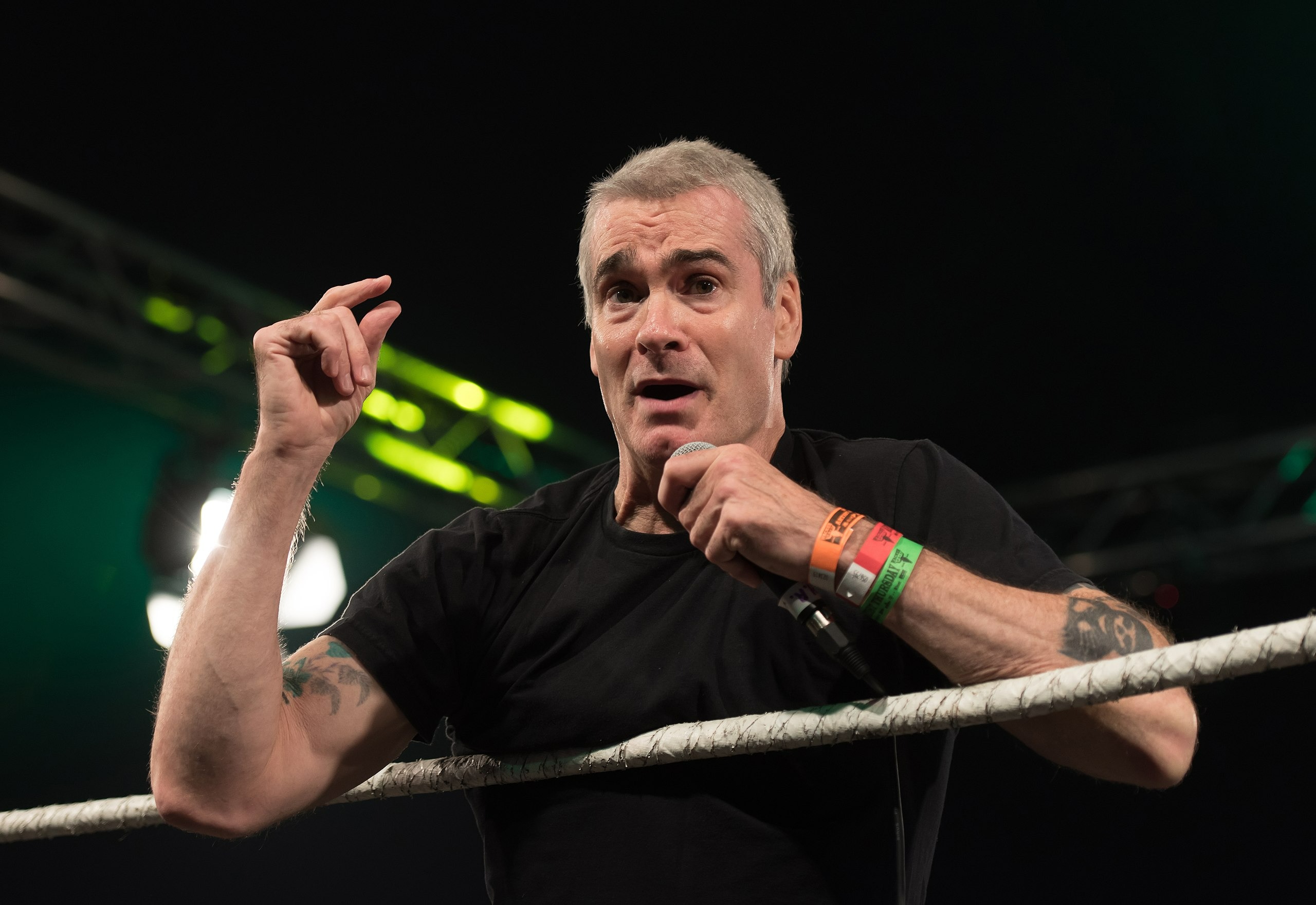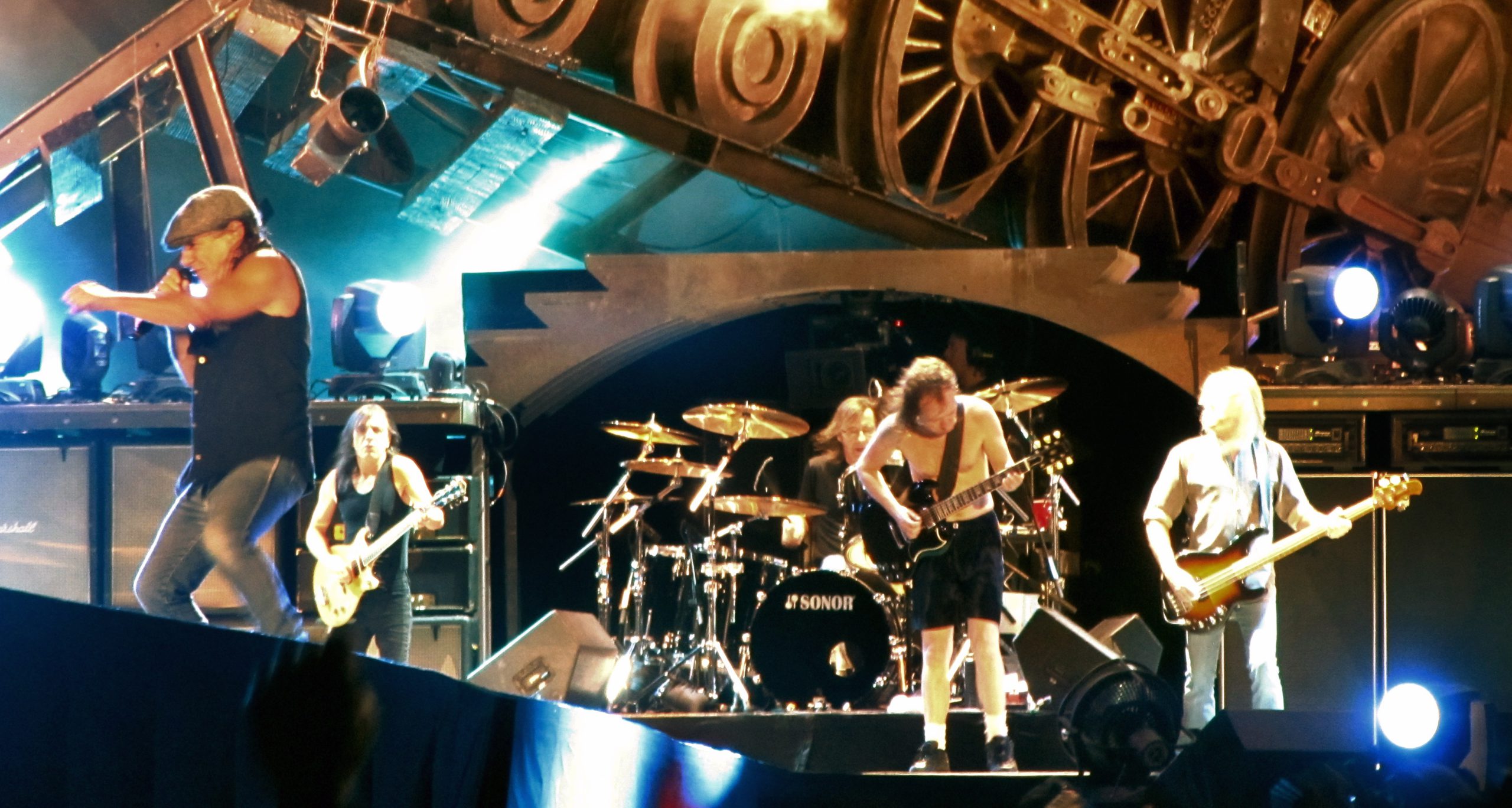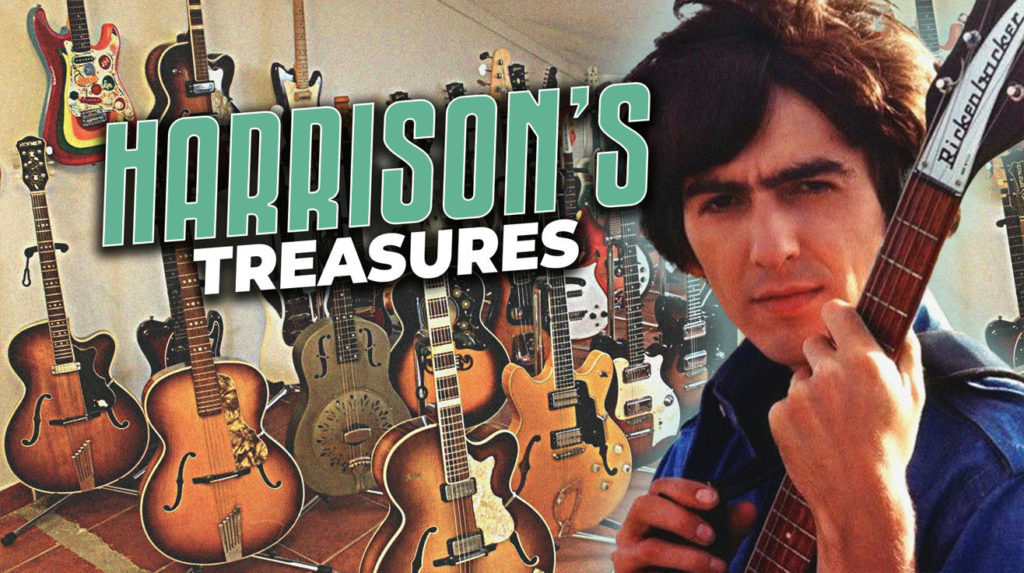
George Harrison’s gear journey maps the neural pathways of rock’s collective consciousness. His instruments evolved alongside The Beatles’ sonic architecture, each guitar archiving a specific moment of cultural transformation. The crystalline jangle of his Rickenbacker cuts through the memory banks of anyone who’s felt the rush of “A Hard Day’s Night,” while his Gretsch Country Gentleman conjures the comfort of a vintage sweater on autumn’s first chill. From humble beginnings to iconic status, these instruments transmitted the frequencies that rewired pop music’s DNA.
Disclaimer: Some images used for commentary and educational purposes under fair use. All rights remain with their respective owners.
Egmond 105 Toledo

Origin stories transcend specifications. Harrison’s musical genesis began with an Egmond 105 Toledo around 1955, reportedly costing £22—a bargain-bin special with questionable tonal qualities. Its laminate construction necessitated the precise attack and disciplined fretting that would later characterize his playing style. The controlled precision in his later work echoes these formative struggles, demonstrating how technical constraints can shape distinctive approaches. This modest Dutch-made guitar wasn’t merely Harrison’s introduction to music; it fundamentally shaped his technical foundation.
Hofner President
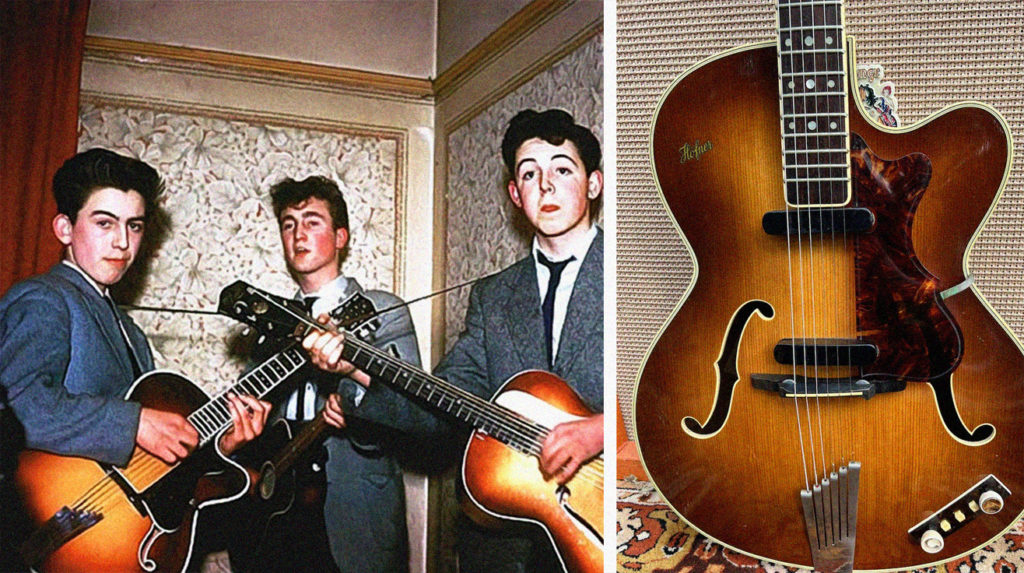
Every musician faces the upgrade dilemma. Harrison’s transition to the Höfner President (approximately £33) marked his first conscious equipment evolution, moving from necessity toward possibility. This archtop’s improved resonance expanded his sonic palette, although claims about Harrison personally adding a pickup remain unverified in primary sources. The President represented an important step during his pre-Beatles development, allowing exploration of more complex musical ideas with newfound confidence. Through this instrument, Harrison began establishing the tonal foundation that would evolve throughout his career.
Hofner Club 40
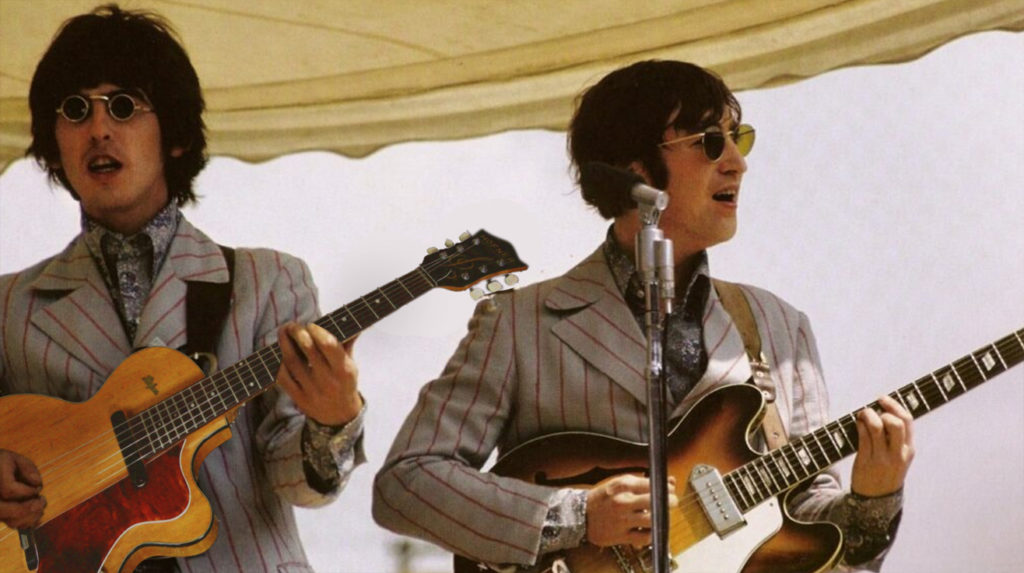
Musical contrarians often make the most interesting choices. While contemporaries embraced cutting-edge solid-bodies, Harrison opted for the Höfner Club 40’s vintage aesthetic. Acquired through a swap with Ray Ennis, this hollowbody produced warmth that contrasted with typical British Invasion brightness. Harrison and Lennon shared this sonic DNA through their Club 40s during early performances. Despite pushing musical boundaries forward, Harrison maintained connections to traditional tones—creating that essential tension between innovation and heritage that defines truly compelling artists.
Futurama
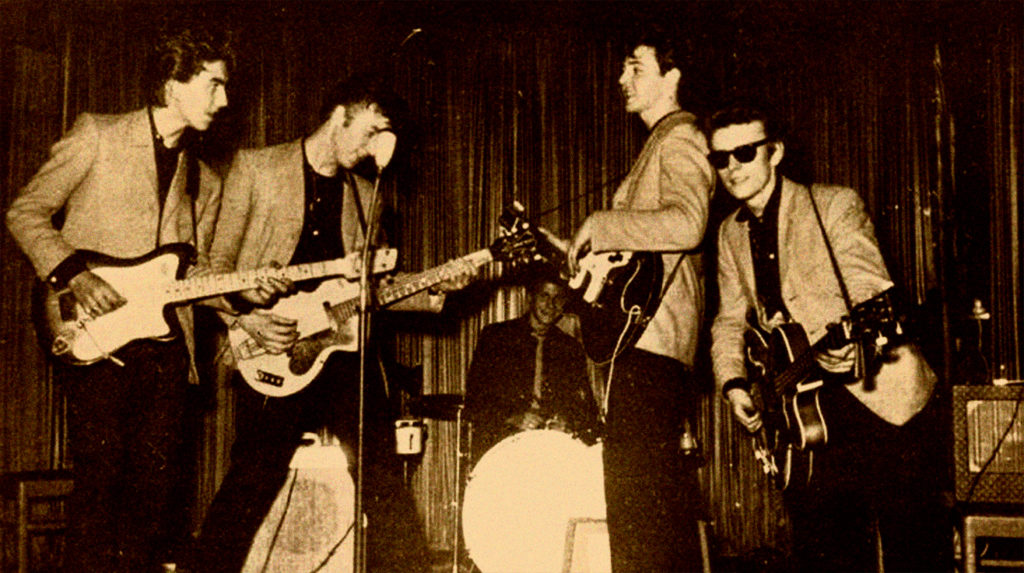
Import restrictions generate unexpected innovation. The Czech-made Futurama (reportedly costing £57) epitomizes British rock’s parallel gear universe, where American instruments remained financially inaccessible. Harrison employed this Fender alternative during Hamburg residencies, demonstrating how geographic and economic barriers shape distinct regional sounds. No piece of musical equipment exists in cultural isolation—the Futurama represents necessity-driven adaptation. Musicians have always transformed limitations into distinctive voices, whether through budget guitars in the 1960s or repurposed technology in contemporary production.
1957 Gretsch Duo Jet
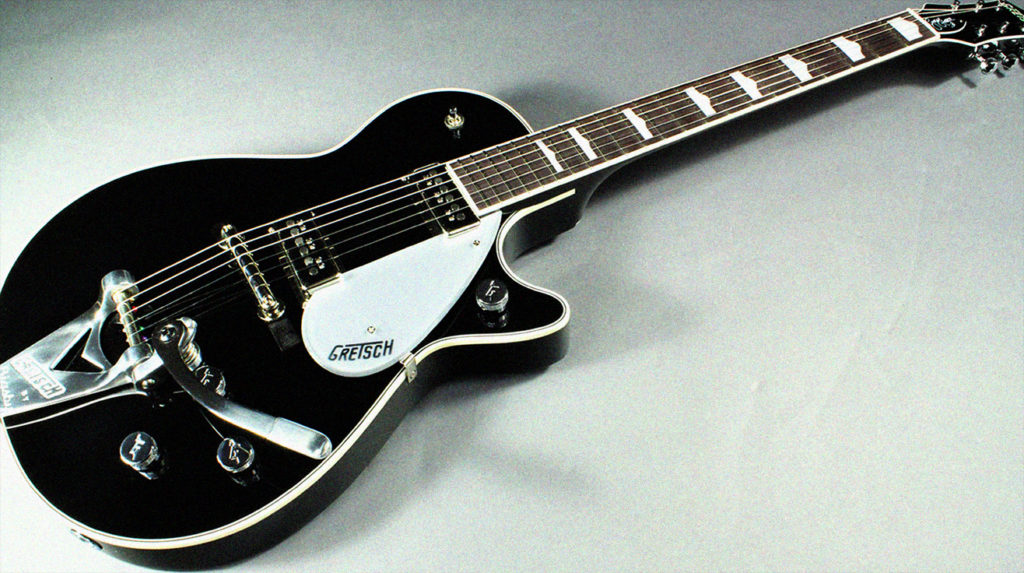
Perfect matches between player and instrument transform music. Harrison’s 1957 Gretsch Duo Jet provided his first truly symbiotic relationship with a guitar. Its semi-hollow mahogany body and 24.5-inch scale created the ideal physical platform, while DeArmond Dynasonic single-coils delivered articulation that early Beatles recordings required. According to Harrison’s recollections, he purchased it secondhand from a sailor—a provenance that adds character to its technical specifications. The Duo Jet represents that crucial moment when the right tool enables an exponential creative leap.
Gibson J-160E
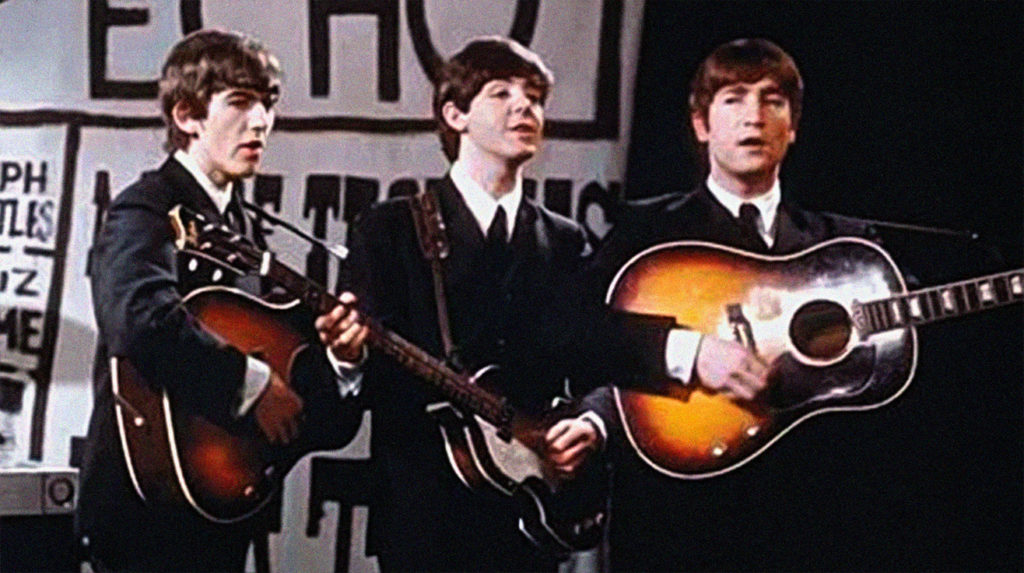
Technological transitions create distinctive eras. The Gibson J-160E occupied that awkward evolutionary phase of amplified acoustics—neither fully electric nor purely acoustic. Harrison and Lennon’s matching models (costing 161 pounds) became compositional workhorses despite feedback issues. The instrument’s hybrid nature created its own voice on early Beatles recordings—similar to how certain vintage synthesizers remain desirable precisely because their technical limitations created unrepeatable tonal characteristics. Sometimes imperfection creates the most emotionally resonant instruments.
Red Gretsch Firebird
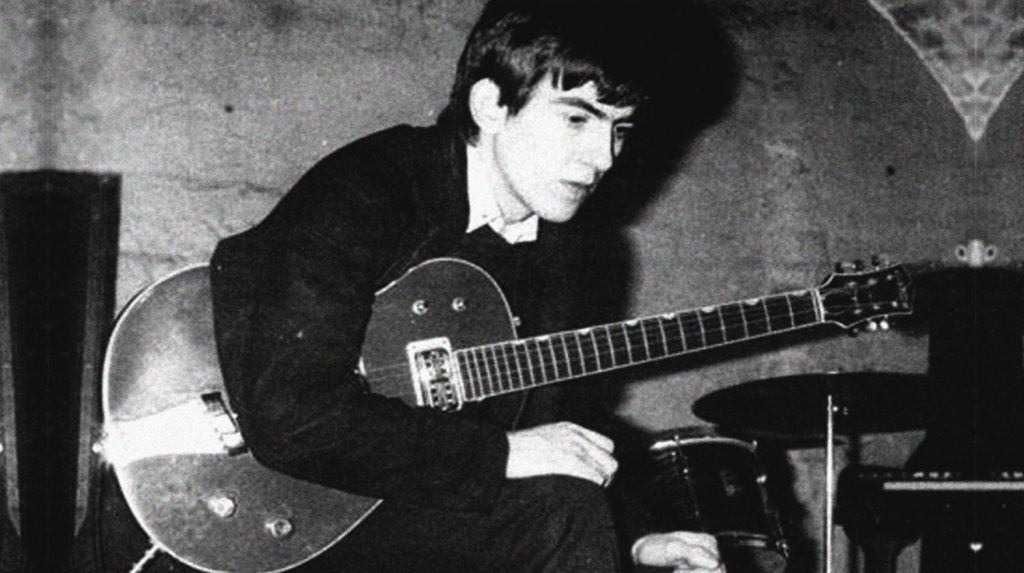
Brief encounters sometimes leave lasting impressions. Harrison’s Red Gretsch Firebird made only a fleeting appearance in early 1963, representing his experimental phase before settling on signature instruments. Its bright tone and modern aesthetics signaled Harrison’s openness to sonic exploration. The limited documentation surrounding this guitar makes it particularly intriguing—a reminder that official histories rarely capture every influential moment in an artist’s development. Musicians’ relationships with their instruments frequently contain these undocumented chapters that nevertheless shape their evolving sound.
1962 Gretsch Chet Atkins Country Gentleman
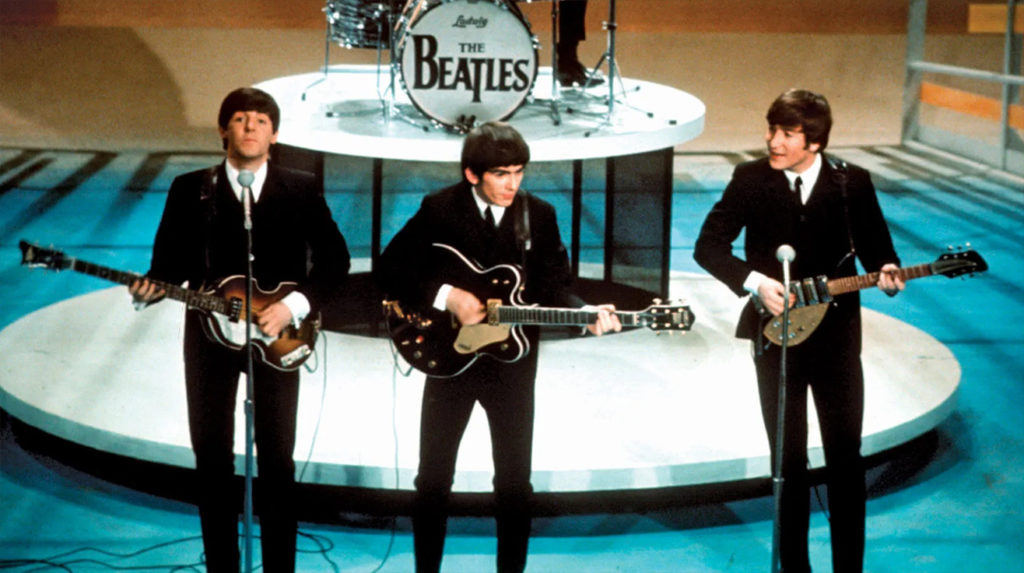
Form and function evolve together. The Country Gentleman’s painted-on F-holes addressed practical feedback issues as Beatles performances moved from intimate clubs to screaming arenas. Its semi-hollow design provided tonal warmth with solid-body stability, while Filter’Tron pickups delivered the rich midrange defining Harrison’s Beatlemania-era sound. This guitar coincided with the band’s transformation from regional phenomenon to cultural force—a tool perfectly matched to its historical moment. Technological adaptation rarely happens by accident; Harrison’s equipment choices reflected strategic responses to changing performance contexts.
Maton Master Sound MS500
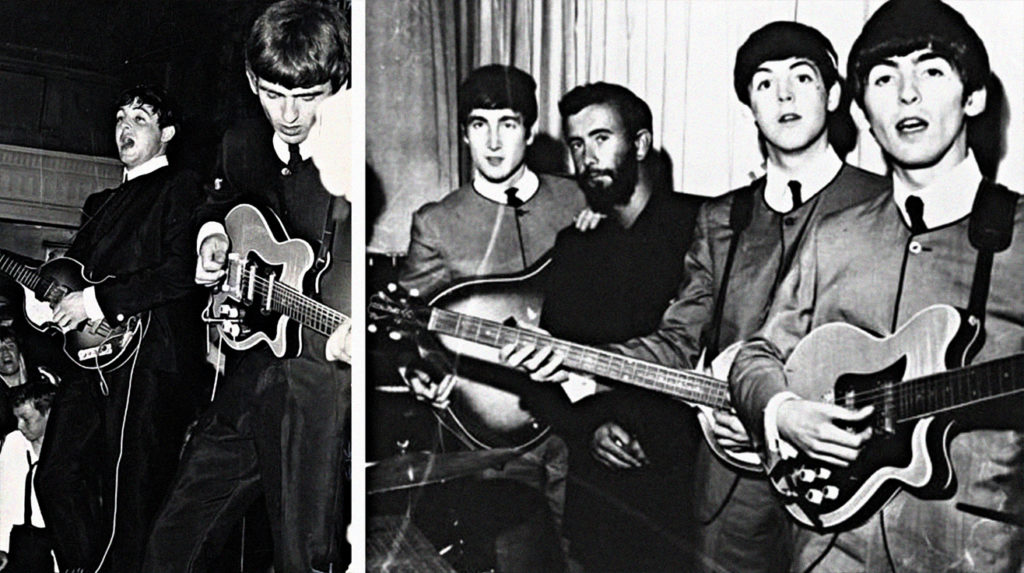
Rarity doesn’t always correlate with significance. The Australian-made Maton temporarily entered Harrison’s rotation when his primary guitar needed repairs during 1963. While production numbers remain undocumented, vintage guitar historians consider this model exceptionally scarce. The Maton colored Beatles performances during a pivotal transitional period—demonstrating how circumstantial instruments sometimes create unexpected creative detours. This guitar remains more mythological than practical for modern players, representing those ephemeral sonic moments that survive primarily through recordings rather than continued use.
1962 Rickenbacker 425
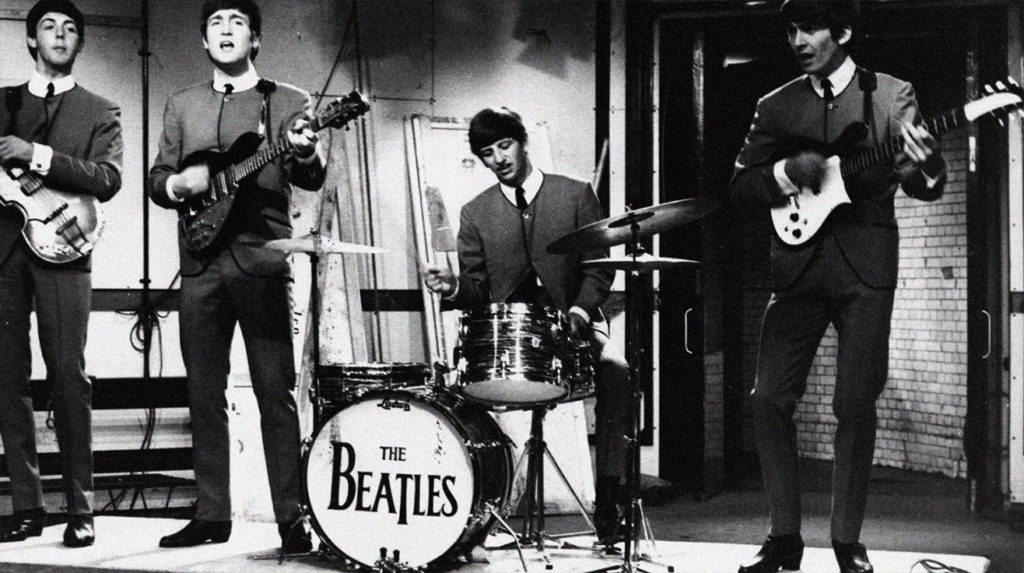
Modification defines ownership more powerfully than original specifications. Harrison transformed the basic Rickenbacker 425 through customization—adding a pickup and applying a distinctive black finish. This personalization process reflected his growing confidence as both musician and gear curator. The guitar later found new purpose when Harrison gifted it to George Peckham, extending its influence beyond original parameters. During an era before signature models, musicians constantly reimagined their equipment to address specific creative needs—a practice that continues in contemporary production, where software customization creates unique sonic fingerprints.
Second Gretsch Chet Atkins Country Gentleman
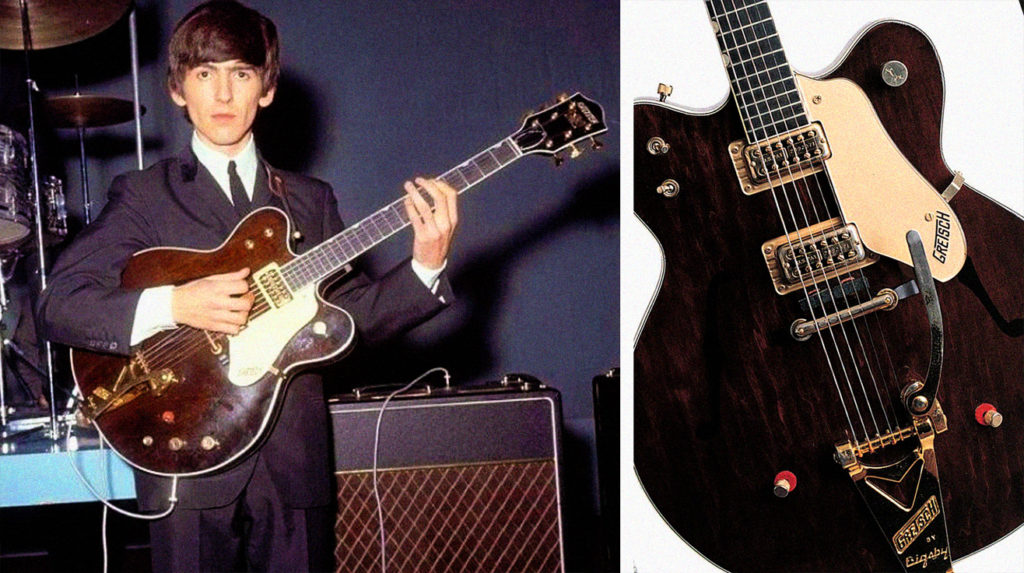
Iterative improvement characterizes creative evolution. Harrison’s second Country Gentleman featured enhanced specifications addressing limitations of his first model. Its wider body delivered greater resonance while improved mute switches facilitated quicker tonal adjustments during performances. The dual Filter’Tron humbuckers provided harmonic richness that separated this instrument from single-coil alternatives dominating British Invasion sounds. Harrison’s growing sophistication as both musician and gear selector demonstrated the reciprocal relationship between artistic development and technological tools—each constantly reshaping the other.
Gretsch Chet Atkins Tennessean
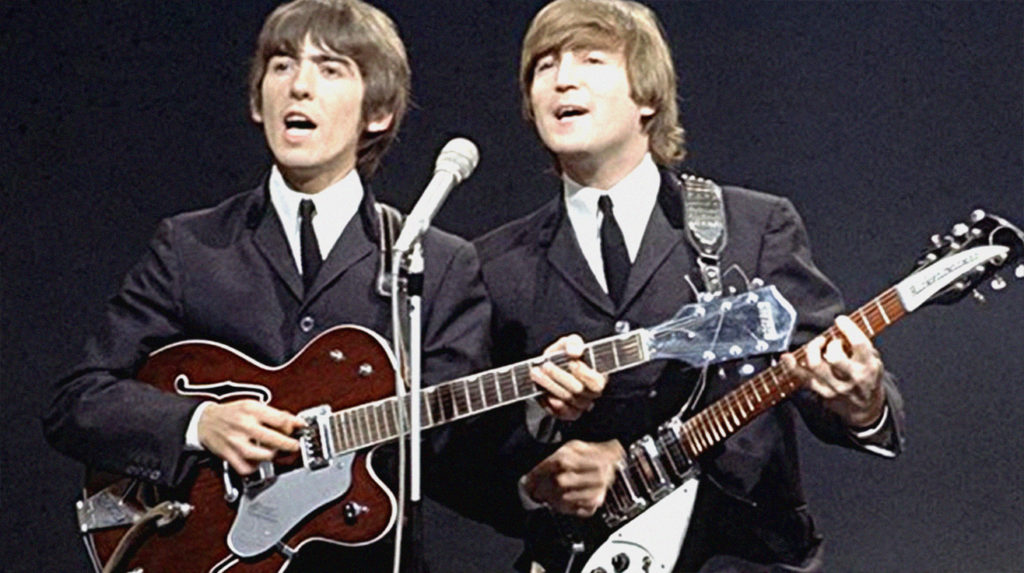
Strategic diversification characterizes mature artists. The Gretsch Tennessean complemented Harrison’s Country Gentleman with HiLo’Tron single-coils offering brighter articulation for specific musical contexts. Its distinctive maroon finish created visual contrast on stage, while the absence of string mutes demanded greater technical discipline. Employed extensively during 1964-65 appearances, this guitar helped Harrison’s parts cut through increasingly challenging live environments. Thoughtful musicians build instrument arsenals addressing diverse creative scenarios—recognizing that singular tools rarely satisfy multifaceted artistic requirements.
Rickenbacker 360/12
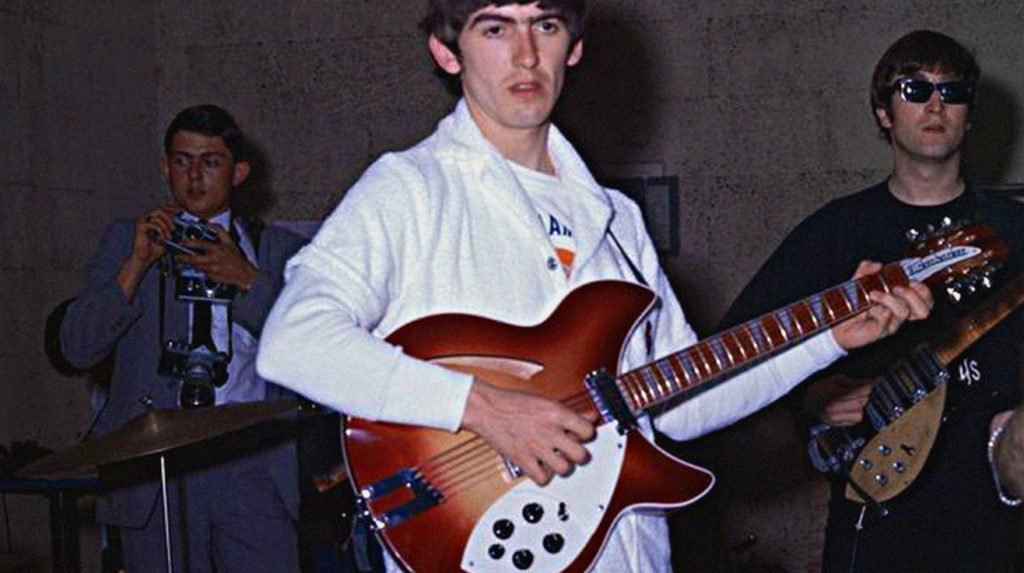
Certain technology fundamentally alters cultural landscapes. The Rickenbacker 360/12 prototype represents one of those rare instruments that created an entirely new sonic dimension. Documentary evidence confirms Harrison used this model during the Beatles’ 1964 Ed Sullivan appearance—instantly introducing millions to its distinctive chime. The innovative headstock design improved tuning stability for its twelve strings while creating the signature jangle that countless bands would adopt. Few instruments have had such immediate cultural impact or created such recognizable tonal signatures across multiple genres and decades.
Jose Ramirez Classical Guitar
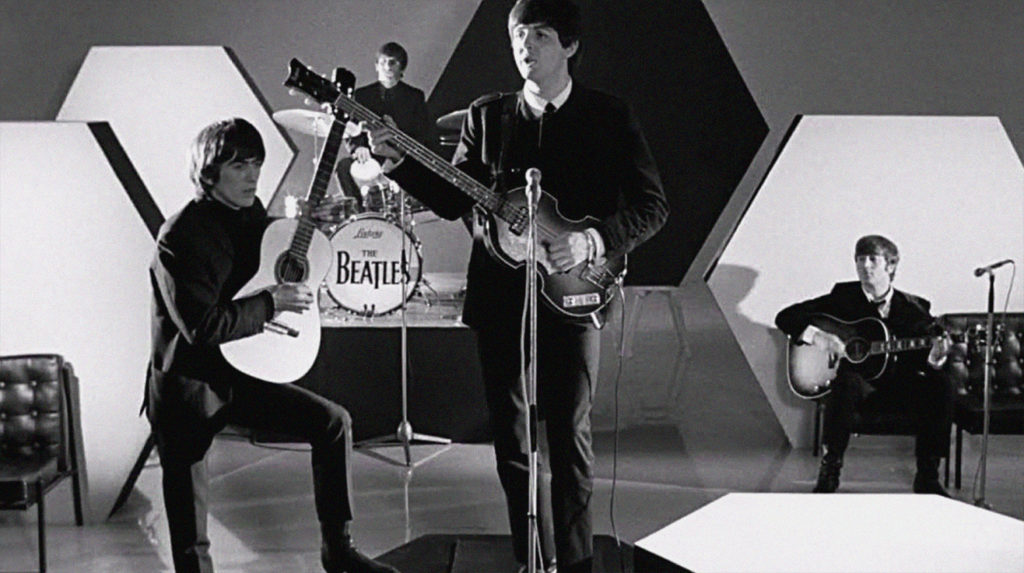
Cross-cultural exploration expands artistic vocabulary. Harrison’s Jose Ramirez classical guitar—gifted by Klaus Voormann—introduced Spanish craftsmanship and nylon-string textures to his predominantly electric approach. This tonal expansion influenced the delicate fingerpicking on songs like “And I Love Her,” incorporating classical elements into the Beatles’ increasingly diverse palette. Harrison’s willingness to embrace unfamiliar instruments demonstrates a crucial creative principle: temporary abandonment of primary musical language often leads to the most significant artistic development. Contemporary producers employ similar strategies when incorporating unexpected instruments to break creative stagnation.
Custom-Built Gretsch 12-String
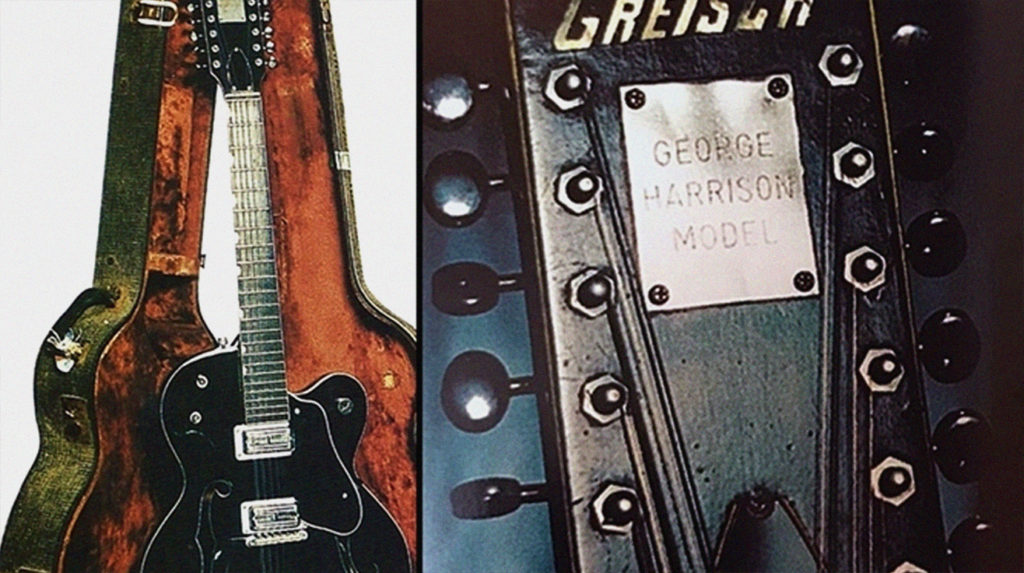
Unsuccessful experiments provide valuable lessons. When standard 12-strings proved inadequate, Harrison commissioned a custom Gretsch 6120 variant with personalized specifications. Despite premium features, the wide fretboard and unwieldy body created ergonomic problems that ultimately rendered it impractical. Harrison eventually gifted it away—acknowledging that customization doesn’t guarantee compatibility. This failed experiment demonstrates how theoretical specifications sometimes fail to translate into satisfying performance tools, particularly when physical comfort becomes paramount. Instrument design always balances technical ideals against practical human factors.
Sonic Blue Fender Stratocasters (1961)
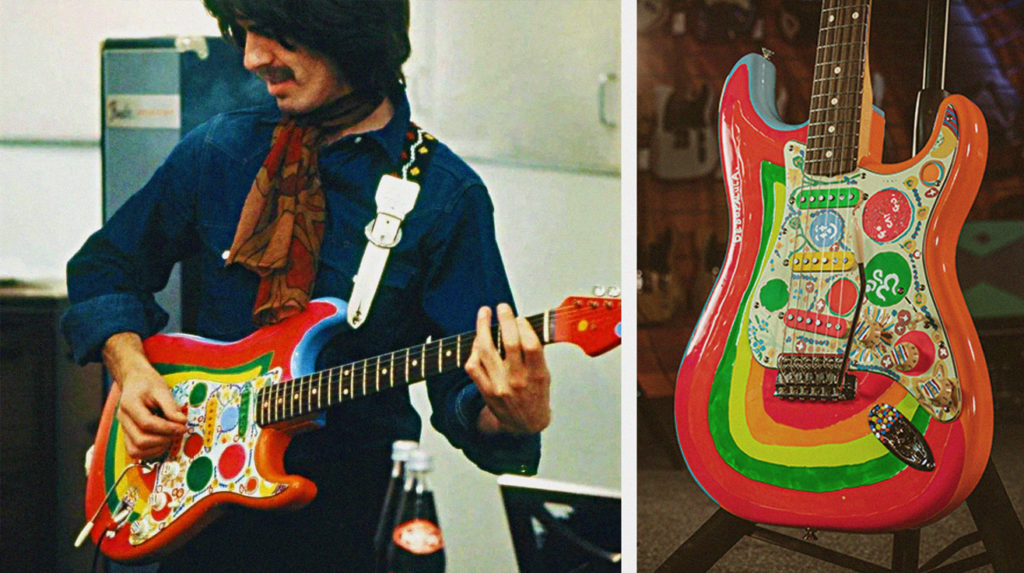
Evolving artistry requires appropriate tools. The 1965 addition of Sonic Blue Fender Stratocasters coincided with the Beatles’ creative acceleration during “Rubber Soul” sessions. These instruments brought quintessential American tone to their evolving sound, with Harrison’s model later transformed into the psychedelic “Rocky” through hand-painted decoration. This acquisition represented both sonic and philosophical shifting—incorporating new influences while visually reflecting their journey from clean-cut pop act toward experimental territory. Major artistic transitions frequently coincide with significant changes in equipment, each reinforcing and enabling the other.
Rickenbacker 360/12 (New Style)
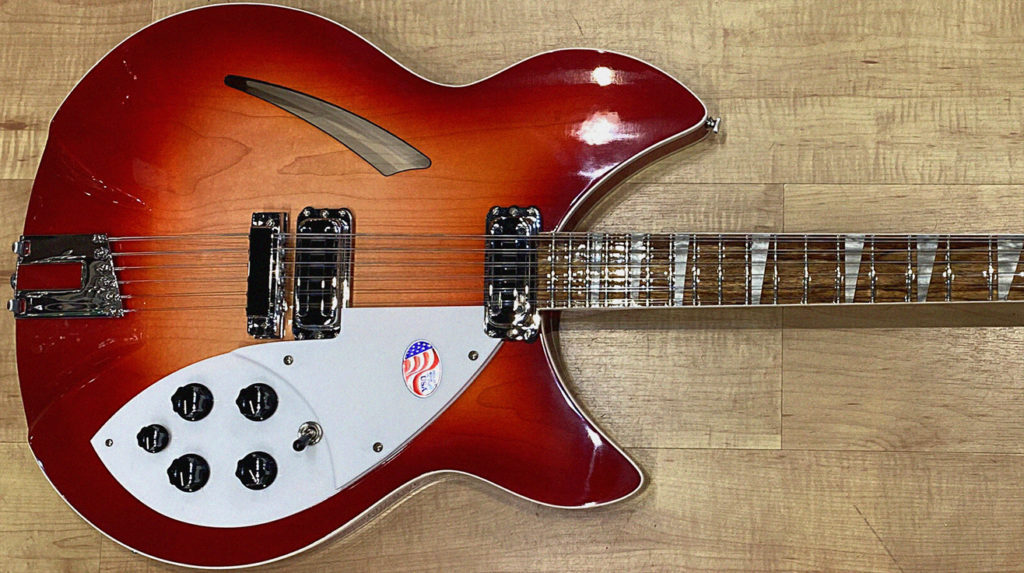
Sometimes refinement proves more valuable than revolution. The updated Rickenbacker 360/12 that Harrison received during the Beatles’ 1965 US tour featured rounded edges and distinctive checkerboard binding—aesthetic improvements enhancing comfort without fundamentally altering its successful formula. While maintaining the chiming tone that had become Harrison’s signature, these enhancements reinforced the instrument’s premium status and helped establish the electric 12-string as a legitimate professional tool rather than novelty. Thoughtful iteration frequently contributes more to musical evolution than radical reinvention.
Sitar
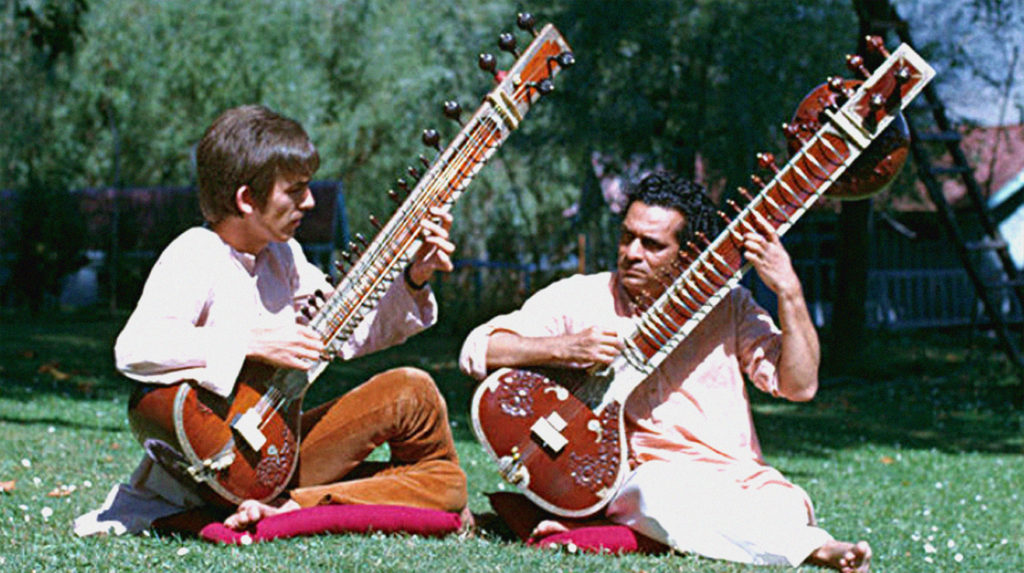
Cultural fusion generates new creative pathways. Harrison’s well-documented study of sitar under Ravi Shankar represented far more than instrumental experimentation—it opened Western pop to Indian classical traditions. His serious commitment demonstrated genuine respect rather than superficial appropriation. The sitar’s appearance on “Norwegian Wood” introduced millions to timbres previously absent from Western pop consciousness, catalyzing the Eastern sound exploration that characterized late-1960s music. This cultural exchange established enduring possibilities for global musical dialogue that continue evolving through contemporary fusion approaches.
Dan Electro Coral Bell Sitar
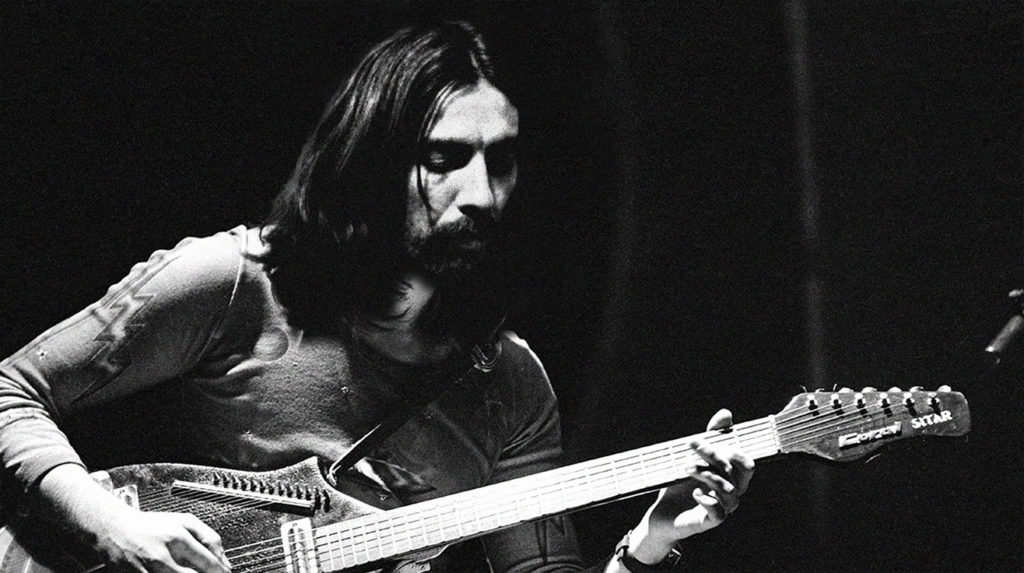
Adaptation democratizes innovation. The Dan Electro Coral Bell Sitar offered Harrison a hybrid approach to Indian tonalities, combining six standard guitar strings with sympathetic strings providing characteristic drone effects. This design facilitated incorporation of Eastern sounds without requiring traditional sitar technique. Harrison featured this instrument on tracks like “Within You Without You,” creating accessible pathways for Western guitarists to explore Indian-adjacent tonalities. Musical progress often advances through such practical compromises—finding middle ground between authentic tradition and pragmatic implementation that expands creative possibilities.
Gibson ES-345 TD
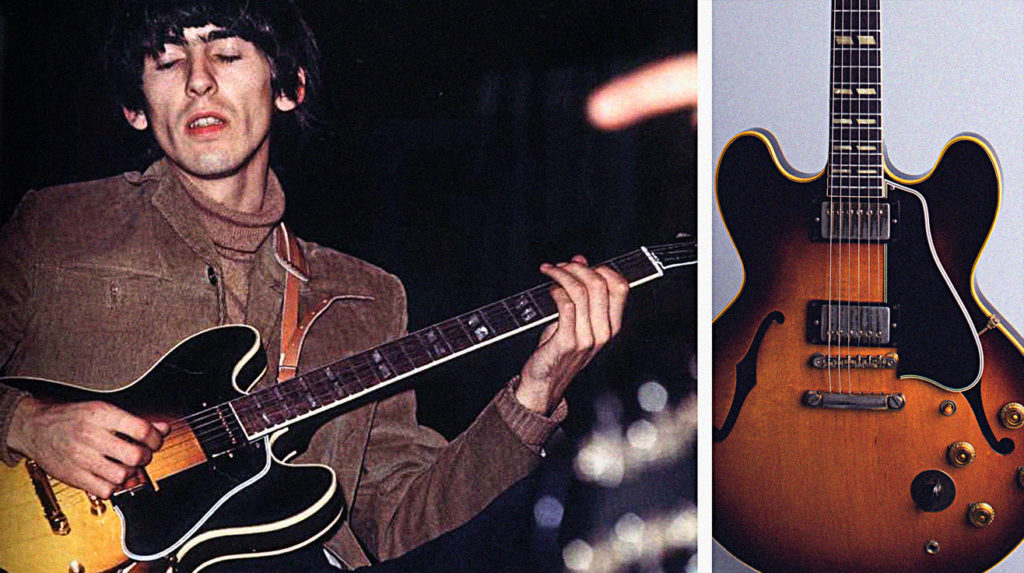
Transient relationships reveal permanent preferences. The Gibson ES-345 TD made only brief appearances in Harrison’s collection, its Varitone switching system offering expanded tonal options that nevertheless saw limited practical application. The guitar appeared in promotional materials without becoming a core instrument in his arsenal. This short-lived connection raises questions about why certain technically superior instruments fail to resonate with skilled players. Even sophisticated instruments don’t necessarily find permanent homes with notable artists if they don’t align with fundamental aesthetic preferences or workflow patterns.
Epiphone Casino
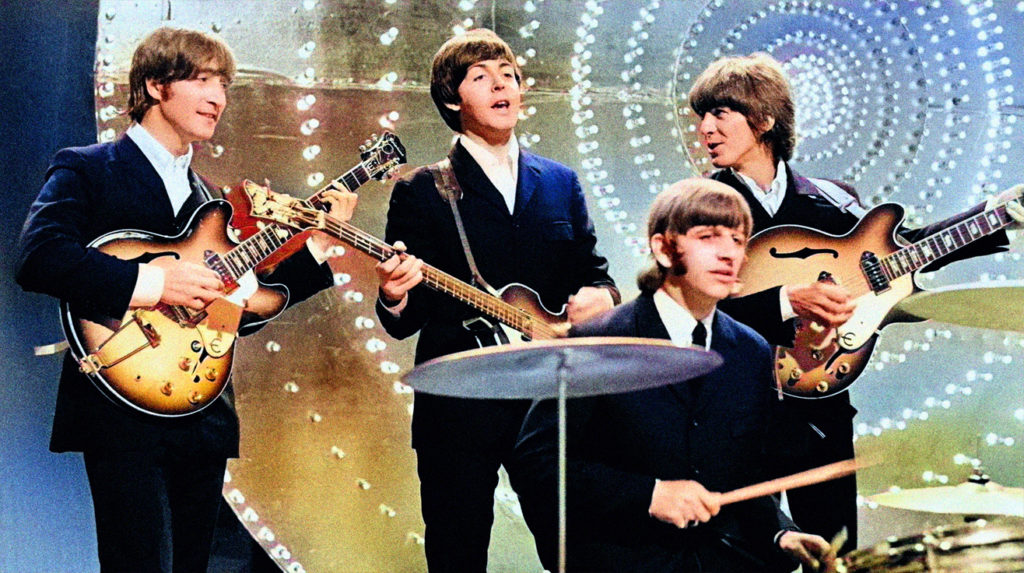
Shared instruments sometimes generate collective identity. The fully hollow Epiphone Casino gained prominence across The Beatles’ late-period work, with photographic and studio evidence confirming Harrison, Lennon, and McCartney all adopted this model with individual modifications. Harrison maintained the sunburst finish while adding a Bigsby vibrato for subtle pitch manipulation. The Casino’s resonant body and articulate P-90 pickup tone proved ideal for increasingly complex compositions between 1966-67. This triple adoption created tonal consistency during a period when individual musical identities were becoming increasingly distinct.
Gibson SG Standard (1964)

Specific instruments sometimes catalyze creative breakthroughs. The 1964 Gibson SG Standard with its lightweight construction and powerful humbuckers facilitated Harrison’s increasingly adventurous playing on “Revolver,” providing both physical comfort and saturated tone for “Paperback Writer” and “Rain.” During these groundbreaking sessions, Harrison pushed beyond conventional rock approaches—the SG functioning as partner in exploration rather than mere implementation tool. Later gifted to Badfinger’s Pete Ham, this guitar represents Harrison’s technical maturation—the sound of an artist discovering new expressive possibilities through specific instrumental capabilities.
Gibson J-200 (60s)
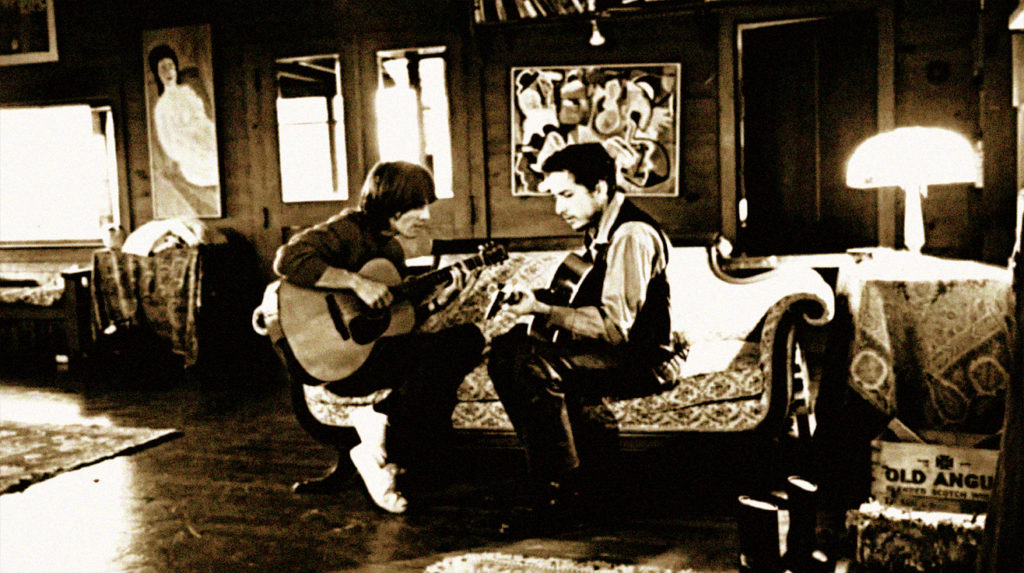
Musical instruments occasionally transcend ownership boundaries. The Gibson J-200 with its commanding “Super Jumbo” body produced the rich acoustic voice Harrison employed during “White Album” sessions before passing to Bob Dylan, who featured it on “Nashville Skyline.” This exchange created a lineage of influence through shared tools. The guitar’s journey demonstrates how instruments sometimes function as collaborative spaces rather than personal possessions—becoming vessels for creative dialogue between artists whose mutual respect transcends commercial competition. These instrument migrations create unexpected connections between seemingly disparate musical universes.
1957 Les Paul (Lucy)
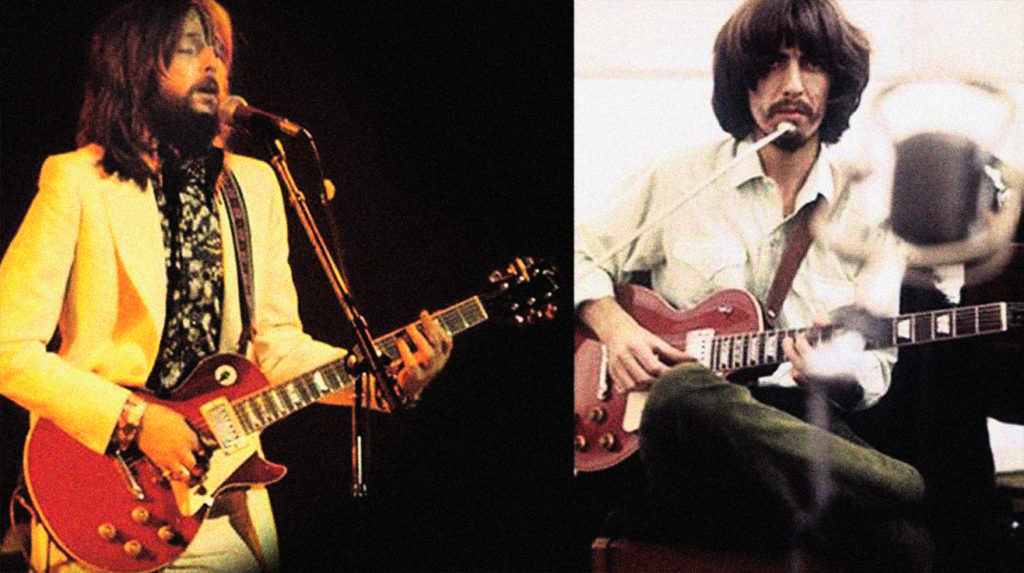
Historical significance frequently outweighs technical specifications. The 1957 Les Paul known as “Lucy” underwent transformation from gold top to vibrant red finish while traveling through multiple influential hands—from John Sebastian to Rick Derringer to Eric Clapton before reaching Harrison. Correspondence between Clapton and Harrison confirms this provenance. Featured prominently on “While My Guitar Gently Weeps,” its warm PAF humbucker tone provided emotional foundation for one of Harrison’s most enduring compositions. Lucy exemplifies how instruments accumulate both history and mystique through their associations, each player contributing to evolving identity.
Fender Bass VI
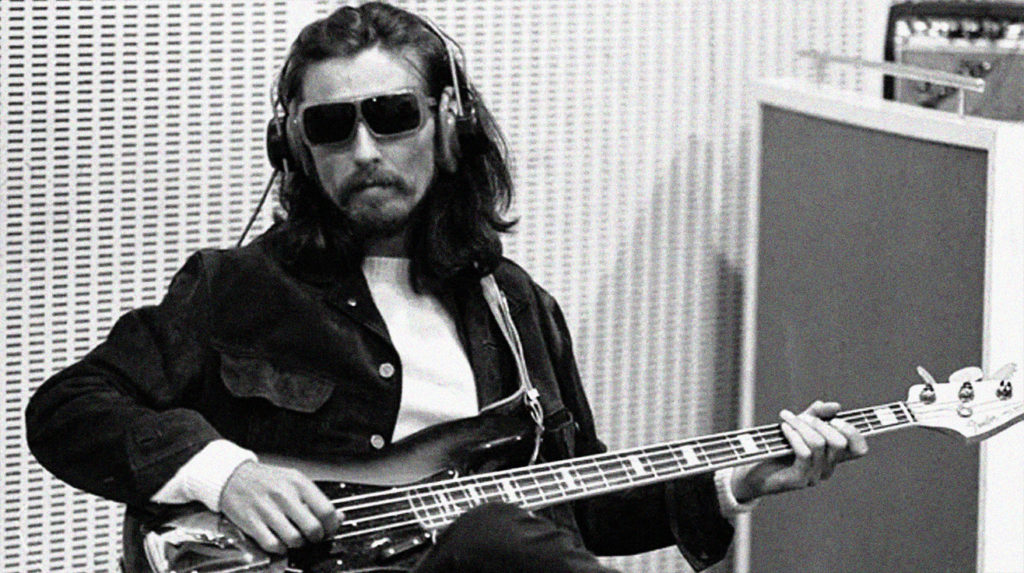
Role flexibility reveals unexpected dimensions. The Fender Bass VI with six strings tuned an octave below standard guitar created a hybrid instrument blurring traditional categorizations. Harrison and Lennon both utilized this versatile tool on “White Album” and “Abbey Road” tracks when McCartney focused on other instruments. This instrumental cross-training allowed Harrison to approach rhythm from alternative perspectives. The Bass VI highlights Harrison’s adaptability and willingness to serve compositional needs rather than personal ego—qualities that elevated his musicianship beyond technical proficiency to encompass genuine collaborative intelligence.
Rosewood Telecaster
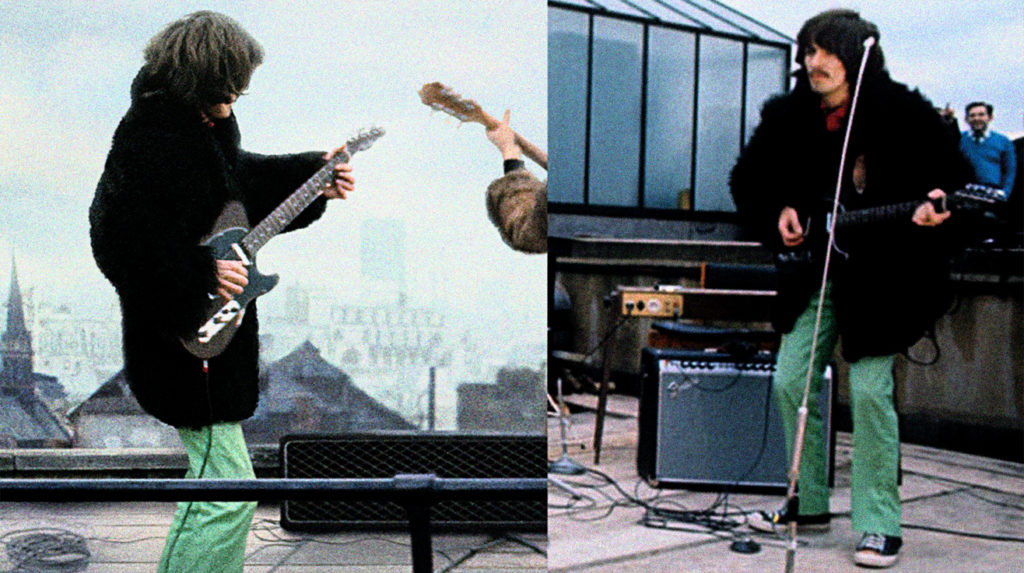
Signature instruments emerge through perfect convergence of timing and design. Harrison’s Rosewood Telecaster balanced visual distinctiveness with tonal uniqueness. However, contrary to common misconception, it featured a maple neck with rosewood fretboard rather than all-rosewood construction. Despite substantial weight, Harrison prominently featured it during the Beatles’ historic rooftop concert, creating an instantly recognizable visual and sonic signature. The guitar’s rich character complemented the “Let It Be” sessions perfectly, demonstrating how specific instruments sometimes align precisely with particular creative moments, becoming inseparable from the music they help create.




